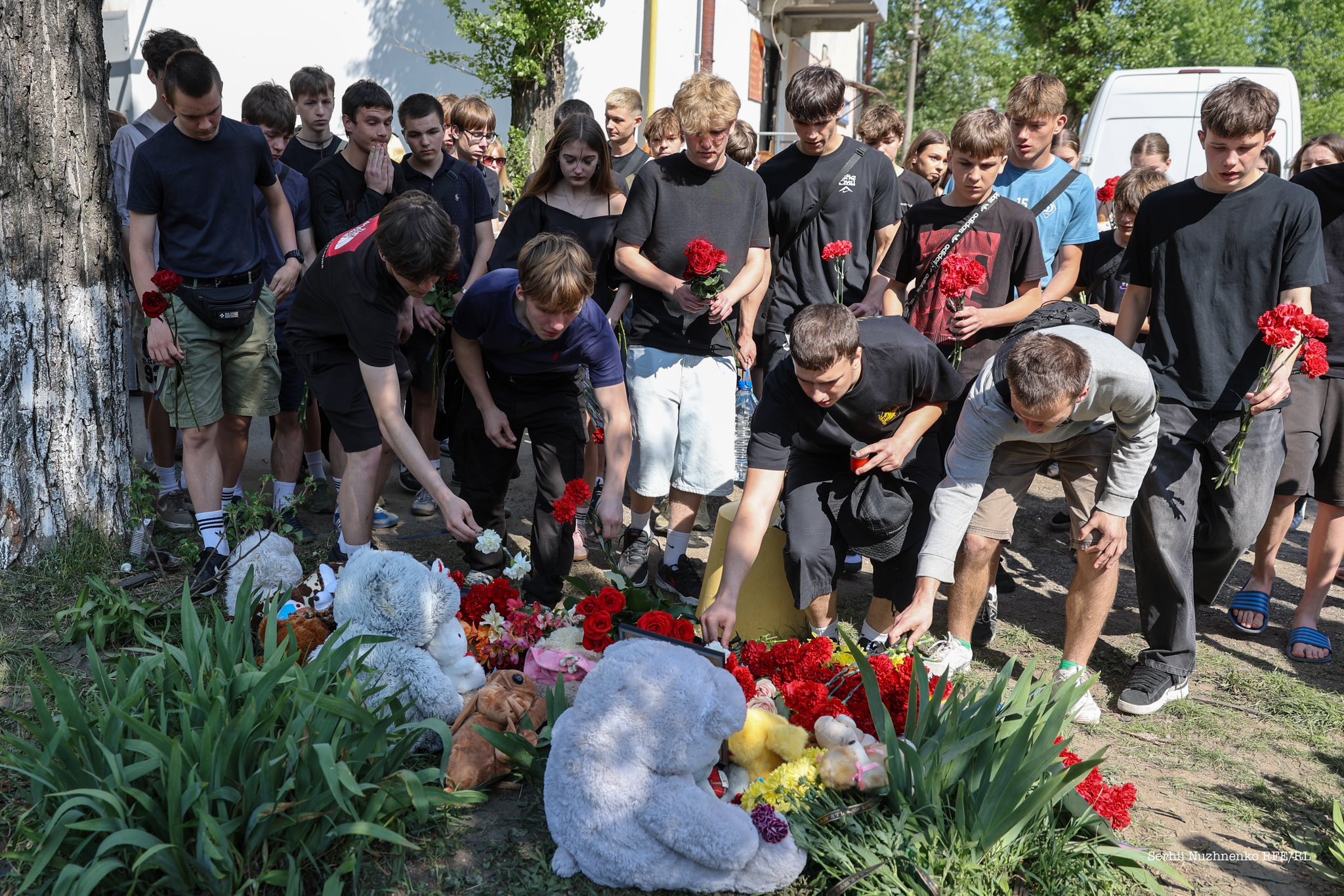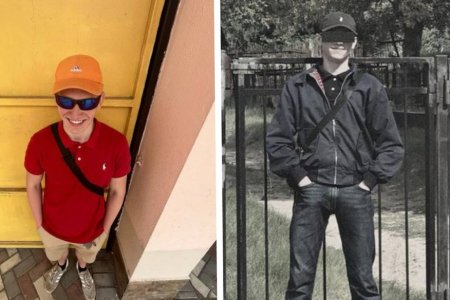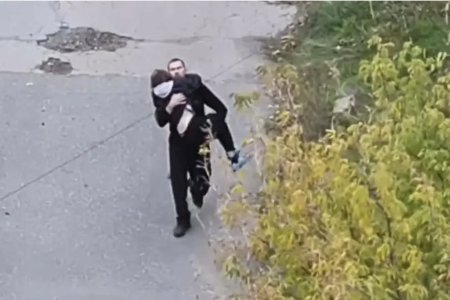
Russian leader Vladimir Putin has claimed that Russia’s Palm Sunday double missile attack on the centre of Sumy which killed 35 civilians, including two children, was ‘revenge’ for the actions of the Ukrainian Armed Forces in border regions, including the Kursk oblast. The two ballistic missiles used cluster munitions which are designed to cause multiple explosions over a larger area, and left almost 120 civilians wounded, including 15 children. The missiles were aimed at the city centre on a Sunday morning as people were returning from church services or out for a stroll.
In a slight shift from a series of comments which blamed Ukraine for Russia’s war against it, US President Donald Trump called the missile attack ‘terrible’, but suggested that it had been “a mistake”. Putin has, indeed, confirmed that Russia’s “revenge” was supposed to target Ukrainian defenders receiving awards at the congress centre of Sumy University. He said that Ukrainian defenders “whom we regard as criminals who were supposed to receive deserved revenge for what they have done in the border region, including in Kursk oblast. They received revenge. This was done in order to punish them”. No Ukrainian defenders were killed in Russia’s attack. Although questions have since been legitimately asked and action taken over the decision to hold a military award ceremony in a city centre, Russia could not have failed to understand that the main targets of its missile strike would be civilians.
The attack on Sumy came exactly ten days after Russia’s missile strike on a residential area, including a children’s playground, in Kryvyi Rih, which killed nine children and 11 adults. The UN Human Rights Monitoring Mission report that “the missile detonated in the air, launching shrapnel across the public park and thereby drastically increasing the number of casualties.” Then too, Moscow claimed that it had hit a military target. While the US response was alarmingly weak, other countries expressed outrage and UN Human Rights Chief Volker Türk was blunt and quite unequivocal in his denunciation. Even if Russia had had information about the supposed presence of military personnel, “the mode and circumstances of attack may constitute an indiscriminate attack”. If the latter amounted to an attack directed against civilians, this would constitute a war crime. It is clear that the same applies to targeting the centre of the city in Sumy at 10 a.m. on Palm Sunday.
The suggestion that Russia’s attack on Sumy on 14 April was a ‘mistake’ and Moscow’s standard refrain that it only bombs ‘military targets’ seem especially cynical given the sharp escalation in attacks on civilian targets in April. At a press briefing in Kyiv on 24 April, the UN Human Rights Monitoring Mission [HRMMU] reported that at least 151 civilians had been killed, and 697 injured during the first 24 days of April. This was a massive 46 percent increase on the same period in 2024. The monitors warned that the number was likely to rise as their verification process was still underway.
The monitors reported that in the early hours of 24 April, Russia had “launched a large-scale, coordinated attack on Kyiv city and at least eight other regions of Ukraine, with scores of loitering munitions and missiles.” In Kyiv, during the night from 23 to 24 April, a missile had directly struck a two-storey apartment block, razing it to the ground. The death toll has risen since the briefing and now stands at twelve, with 87 civilians injured.
Among those killed were 17-year-old Danylo Khudia, a student at the Kyiv Aviation College and his parents, Oleh and Victoria Khudia. Danylo’s friends stood waiting during the morning as rescuers searched through the rubble. At least two others were very young - Sofia Kozlova was just 19, Nikita Kozlov – 21. The Russians also killed 44-year-old Anna Polishchuk, who was on maternity leave, caring for her 18-month-old daughter. The little one miraculously survived, together with her father, Oleksandr. He had served in Ukraine’s Armed Forces since 2014 and had been taken prisoner in 2022, losing the sight in one eye while in captivity. As if he had not suffered enough, he has now lost his wife.
HRMMU stresses that similar attacks took place in Kharkiv, Dnipropetrovsk, Zhytomyr, Zaporizhzhia and Kyiv oblasts. Danielle Bell, Head of the Monitoring Mission in Ukraine, spoke of a “deeply disturbing trend” with “civilians bearing the brunt of ever more intense and frequent attacks”,
The monitors stress that Russia’s use of “explosive weapons with wide-area effects—including missiles, loitering munitions, and aerial bombs—has caused deaths, injuries, and widespread destruction on an almost daily basis.”
None of this, nor the strikes by drones on buses, ambulances, private cars, such as the 23-April attack on a bus in Marhanets which killed nine civilians, are new. Russia has been directly carrying out such atrocities since 24 February 2022, and while hiding behind its proxy ‘Donetsk and Luhansk people’s republics’ since 2014. The scale now, however, is terrifyingly different, as has thus far been the response from the US administration. It remains to be seen if Trump’s brief meeting with Ukrainian President Volodymyr Zelensky on 26 April changes anything. Up till now, the main reaction to each of the near daily atrocities has been that “this is why President Trump is seeking a peace deal”. It may well be, but that does not explain why Zelensky and Ukraine are somehow presented as to blame for the war, and for being “unhelpful” when the US proposals appear to involve capitulating to key Russian demands (including US recognition of Crimea as ‘Russian’ and blocking of any future membership of NATO), while quite unwarrantedly assuming that Moscow will keep its word on honouring any such deal.



